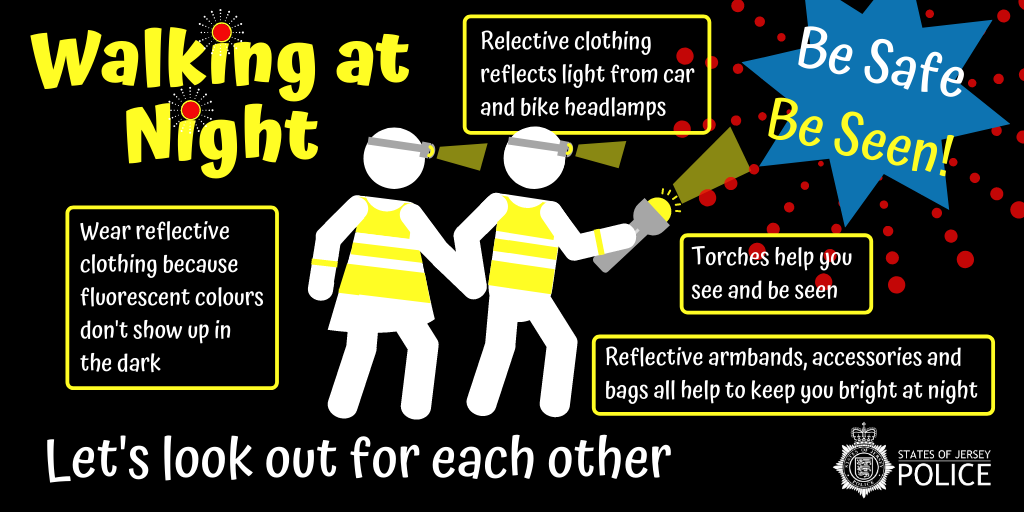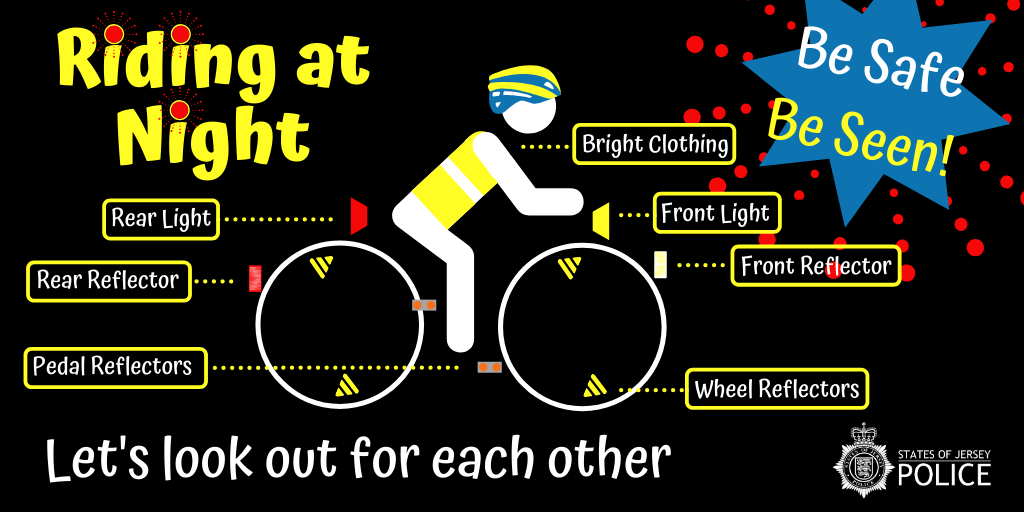Be Safe Be Seen – Let’s Look Out for Each Other
Traveling to work or school, especially in the darker hours or during foggy conditions, requires extra precautions to ensure your visibility to other road users. Whether you’re walking, cycling, or driving, making yourself visible is crucial for your safety and the safety of others.
Pedestrians
Whether walking to and from school, the shops, or walking the dog, during foggy and overcast days pedestrians should wear something brightly coloured and something reflective at night. Choose a bag or rucksack with high-visibility strips. Fluorescent and reflective armbands can be worn over coats and clothing, and stickers can be used on bags. Reflective dots on knees and ankles can draw attention to runners during dark nights.
Keep to the footpath where there is one; if not, keep to the right-hand side of the road so you can see oncoming traffic. Being aware of your surroundings can help as well, so take out the earphones and leave your phone in your pocket.

Pedal Bike Riders
Many people riding bikes at night assume that street lights are enough for motorists to see them, as they can see themselves. This is not the case, and many incidents involving bicycles during the dark are due to cyclists wearing dark clothing with no lights or reflectors. Drivers are looking for lights, so when a cyclist appears with no lights, it comes as a surprise.
At night, your bike must have white front and red rear lights lit; it must also be fitted with a red rear reflector and pedal reflectors. White front reflectors can also help you to be seen, and spoke reflectors will help other road users see you from the side.
Other items like reflective tape and flashing valve caps are also available. Any part that is moving, such as knees, ankles, and valves, and is either reflective or illuminated, draws drivers’ attention to you effectively. Wear bright and, if possible, reflective clothing and always assume that the driver has not seen you.

Cars
Regularly check that all of the lights are working and use them. Most of us have seen vehicles with only one headlight working, which can look like a motorcycle from a distance, and in some cases just one dim sidelight. If you can’t be seen, you are in danger of being involved in a crash, and if any of your lights are not working, you are breaking the law.
Consider if you are using other lights that could dazzle road users and stop them from seeing other hazards. Do not use front or rear fog lights unless the visibility is seriously reduced. The Highway Code says, “Generally less than 100 metres (328 feet).”
Try to keep the car clean so that it reflects light and makes it easier to see. Pay particular attention to lights, windows, and mirrors, as the slightest bit of dirt or mist can diffuse light and make it hard to see. Don’t forget that cleaning the inside of the window is as important as the outside.
Carry a high-visibility vest or jacket and put this on if you need to get out of the car in the dark. (This is already a legal requirement in some European countries.) Be very aware that other road users may not be doing anything to keep themselves visible. Better use of lights will help you to see and avoid others.
Motorcycles
If you ride a motorcycle, you probably already know that you are often invisible to some other drivers, even in good daylight. For this reason, many motorcyclists always ride with their dipped headlights on if they don’t have a daytime running light.
This situation is further compounded when it is dark. Riding in a dominant road position (out from the kerb and more towards the middle of the lane) will help others to see you and give you a better view into side roads and around trees and lamp posts. This will give you and others more time to react if a problem occurs.
As with other vehicles, a bright shiny bike and bright helmet will improve your chances of being seen. Light or high-visibility clothing may also help drivers behind to see you.
Do not use a tinted visor at night as it will make it difficult to see pedestrians and cyclists in dark clothing. No matter how bright and visible you have made yourself, always ride assuming that the other road user has not seen you.


